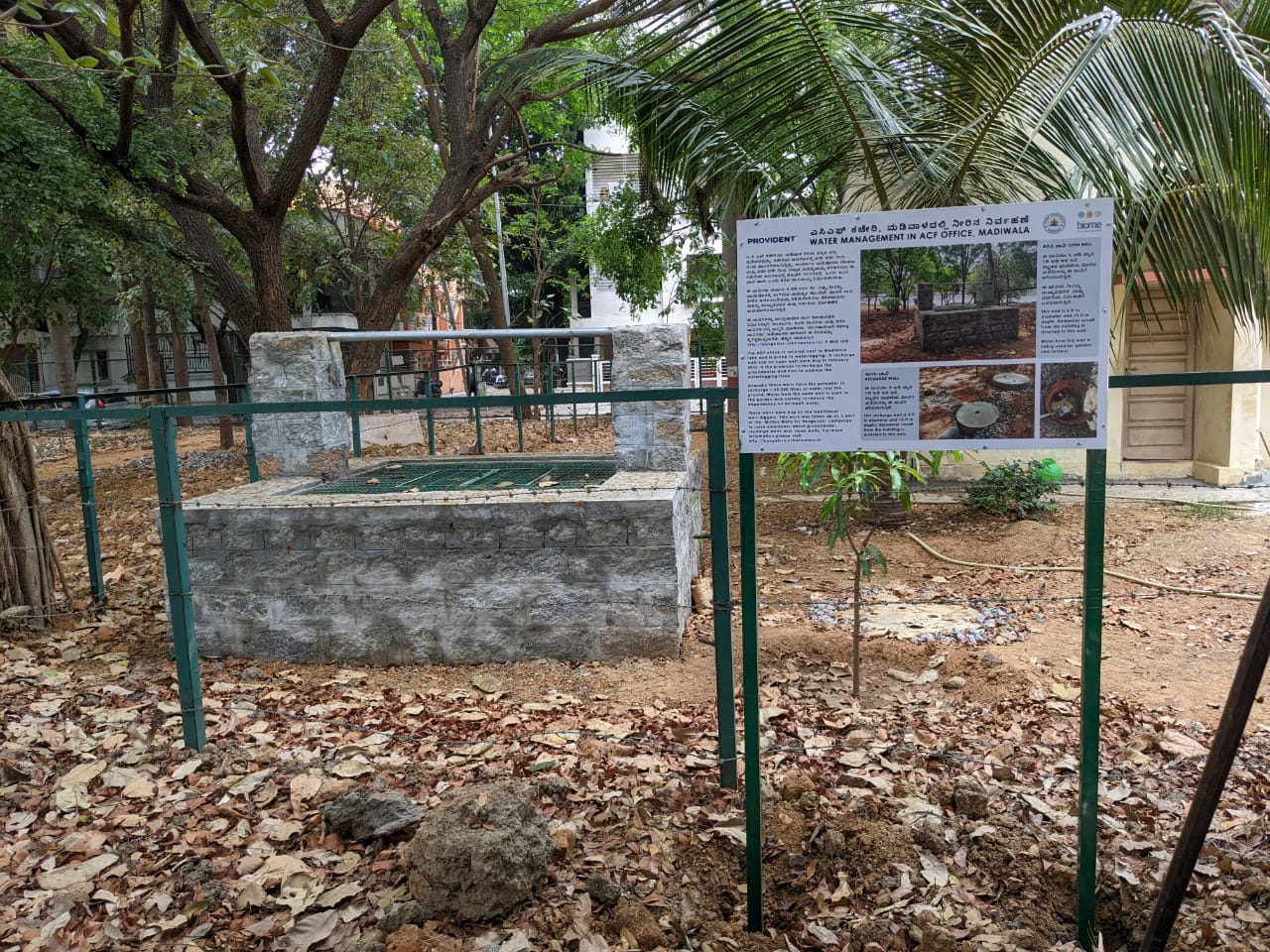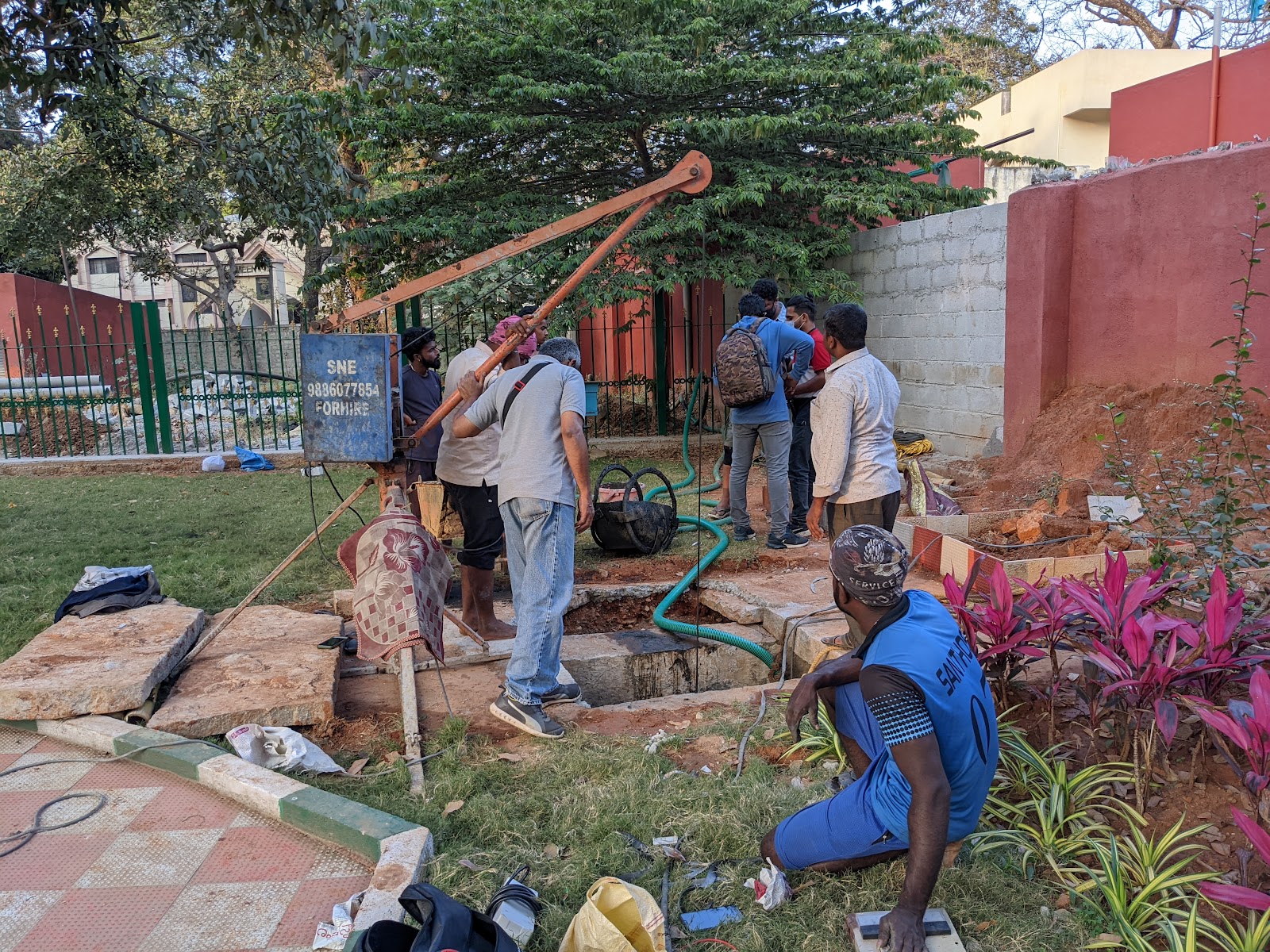1.0 Overview and Background
Madiwala lake is situated in BTM layout in East Bangalore, and is part of the Koramangala-Chalaghatta valley. It is a part of the Varthur lake series. It is one of the biggest lakes in Bangalore spread over an area of 282 acres and was built by the Cholas in a day. It is home to many migratory birds. The lake comes under the administration of the Karnataka State Forest Department which carries out the routine maintenance of this lake. There is a children's park as well.
Forest office at Madiwala Lake
Office of the Assistant Conservator of Forest, Madiwala is located on 13th Cross, 29th Main, BTM 2nd Stage, adjacent to Madiwala Lake. The area around the office building gets waterlogged in the rainy season.
The building has 5 downpipes, 2 in the front, 2 at the back, and one on the side of the building. There is also overflow from the overhead tank where the water puddles on the side of the building. Water for the building is pumped from a borewell into the overhead tank from the Range Forest Office which is about 100m away.
The groundwater table at the office is high as it is close to the lake. Therefore, it was proposed to dig two wells, to mitigate flooding and also to use the well water in the garden.
2.0 Potential for recharge
The ACF office has a rooftop area of 100sqm and the open area around the area of the building is approximately 300sqm.
Taking the average annual rainfall as 974.5 mm, the actual harvestable rainfall for the rooftop is 87 KL (80 sqm x 0.9 x 974.5 mm) and for the open area is (assuming that 20% of surface runoff can be harvested, 300 sqm x 0.2 x 974.5 mm) 58 KL.
3.0 Work done
Plan (Figure not to scale)
With the help of funding from Purvankara CSR, Ramakrishna and the team dug two wells, over a period of 10 days. The work commenced after a brief pooja/prayer in the presence of the team at Forest Office, Biome team, Puravankara, and all the well diggers.
Prayer and inauguration of the well-digging
A 6ft diameter and 15ft deep open well was dug at the Southeast corner.
- 20 concrete rings of 9” height each have been added
- A silt trap of 3ft diameter and 3ft deep is provided
- Water from the two downtake pipes from the front of the building and the garden area has been diverted to this well, via the silt trap
- A 1 HP, 0.76 KW, single phase submersible pump has been installed in the well to use the water in the garden.
- A 3ft parapet wall is constructed around the well and a pulley to draw water manually has been installed.
Left - commencement of well-digging
Left - Digging in progress; Right - Well digging in progress, water table hit at 7f bgl
Pump and tap provided, for water to be pumped out from the 6ft dia well
A 4ft diameter and 15ft deep recharge well was dug at the Southwest corner
- 20 concrete rings of 9” height each was added
- A silt trap of 3ft diameter and 3ft deep is provided
- Water from the downtake pipes at the back of the building is diverted into this well through the silt trap.
- A grill has been provided just below the last ring, for safety purposes
- Additionally, overflow of the OHT is also diverted to this well, via a silt trap.
Silt trap and 4ft dia recharge well
4ft dia, 14ft depth well, with water at 7ft bgl
The water from the down take pipes has been diverted to an open channel, sloped towards the silt trap. A mesh has been provided, so that leaf litter and other debris do not enter the silt trap.
4.0 Water usage from the wells
The water level is up to 7ft below ground level in both wells i.e. there is 3KL of water in 4ft dia well and 6.3KL of water in 6ft dia well. The water from the bigger well is used for gardening and in the nursery around the Madivala Forest Office.
The water level in well
Completed well - 6ft dia, 15ft depth well, provided with a 3ft height parapet wall



















